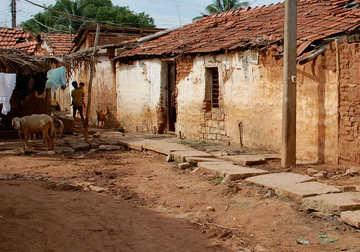Endless experimentation to Rural development
India’s overwhelming majority of population lives in villages. It is because of this rural development is a crux of India’s development strategy. Despite the serious commitment on the part of government, the benefits of the programmes do not seem to reach the intended targets and they fail to serve fully the purpose for which they were launched.
Experience of rural development programmes
In the post independence India several governments made efforts for improving the living condition of the rural people. It started with the Bhoodan Movement and Gramdaan movement in 1951 to community development programme in 1952. Integrated rural development programme (IRDP) was started as a flagship programme approaching holistically to rural development. National extension services to Swarna jayanti gram swarojgar yojana (SJGSY) and National rural livelihood mission (NRLM) were aimed at creating self-employment to the rural poor. The NREGA schemes aims to provide right to work for landless poor in the village area, community participation, asset creation and strengthening the Gram Sabha.
Challenges to schemes at different levels
Rural development programmes were implemented without testing the local suitability. Theoretical perfection of the scheme is regarded as criterion of soundness of the programme. Identification of real poor is a big hurdle as most of the government scheme directly benefits only to the already rich in the villages. Lack of motivation among the rural people did not arouse the participation because of poor communication of the intermediary with the people. Most of the programmes launched by the government without adequate understanding of the complexity are implemented with half-hearted way in haphazard manner.
A number of employment generating schemes such as Swarna Jayanti Gram Swarojgar were launched. Yet they are not able to hold the interest of rural youth. The programme so offered includes the manual jobs, while the youth today needs jobs that are gainful and yet decent. Some programmes lack the adequate trainers.
Non involvement of the beneficiary in the planning and implementation of such programmes help in making it more realistic. Since these people have the correct perspective of their own need and the society in which they are living. There are several cases of default on the part of the beneficiary also, who deliberately take advantage of flexibilities in the government schemes.
Voluntary agencies involved in the development work often dependent for their funds on government whose procedure is very slow and lack of communication exist between these agencies and government. Financial banks and cooperatives have a very crucial role to play in success of these schemes. Many cooperatives are charging high interest on loans. Also the loan sanctioned is inadequate and not timely and hence used for non-productive purposes.
The emanation of all the rural schemes from the top and exclusive reliance placed in pyramidical structure approach brings high administrative cost. New technology including the farm mechanization, high yielding varieties, tractors and irrigation equipments made the agriculture more input intensive. As a result with such efforts only the rich farmers are benefited.
The organizational dimension needs a reappraisal. With number of institution such as the DRDA, village extension workers at the block level and gram sabha’s at the village, cooperatives, corporate banks and the panchayati raj institution need to reconfigure the multi-level planning and making rural development a success.


